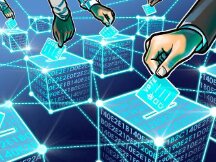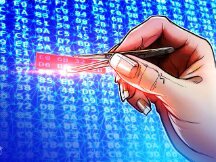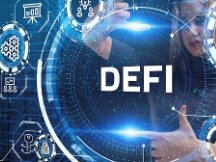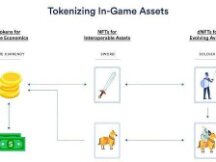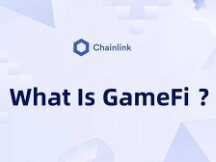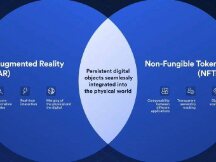Word to understand DeFi 2.0 and the liquidity incentive mechanisms
Key points:
LP Tokens and Decentralized Stability Coins are the first generation of 'Lego currency' in the DeFi ecosystem, paving the way for a new DeFi innovation.
The DeFi 2.0 innovation that occurs today signifies a new form of approval developed by the first generation currency, Lego, and aims to support innovation in the DeFi industry, and its main features are financial distribution and financial support.
This new financial transformation enables the entire DeFi industry to improve speed, while improving user experience, security and usability.
Decentralized finance, commonly referred to as “DeFi”, is one of the most influential and promising new applications in the blockchain space. DeFi is developed by blockchain, which integrates smart contracts operating with secure Oracle networks such as Chainlink, and includes a variety of applications that can eliminate intermediaries from existing financial services and develop new financial models.
The DeFi process itself can be set up without authorization and is fundamental to opening up the growing culture, enabling continuous improvement and redevelopment of established financial models. The evolution of the DeFi ecosystem is changing day by day, a few months ago, a group of DeFi projects focused on liquidity launched a new round of DeFi innovation, also known as "DeFi 2.0".
The concept of DeFi 2.0 is slowly emerging in the blockchain industry. In this new change, some DeFi processes will continue to be repeated from the previous base, and the final update will include mining and lending. Many legal issues that still have tokens on the chain often face the problem of incompetence, and the DeFi 2.0 protocol often fixes this problem.
This article examines the latest developments in DeFi and how it developed the basis for DeFi 2.0, describes the market issues that the DeFi 2.0 protocol seeks to address, and finally, the DeFi 2.0 ecosystem and the new financial framework it has. created.
Early improvement of DeFi
Early DeFi pioneers such as Uniswap, Bancor, Aave, Compound and MakerDAO laid a solid foundation for the growth of the DeFi industry and introduced many combinable 'currency legos' into the DeFi ecosystem.
Uniswap and Bancor are the first non-commercial transaction processors (AMMs) and the first DeFi application that allows users to exchange tokens directly without any liability. Aave and Compound have announced an amazing lending platform. Deposits can generate income from the channels and funds can enter the platform without authorization. MakerDAO allows ecosystem users to hold and trade securities to secure cryptocurrency exchange.
These agreements allow users to enter a stable market, our basic financial services traditional financial services, the use of loan products and earn money. Although DeFi services are well known, their underlying architecture is completely different from the central organization, especially in two dimensions: transparency and user control. . There's a lot of tech going on after every service outage, and that's the basis of DeFi innovation.
DeFi innovation in addition
A classic example of DeFi blockchain innovation is the announcement of liquidity provider (LP) tokens through decentralized exchange (DEX) platforms using the Automated Market Maker (AMM) model. The DEX is an exchange for the textbook exchange community, but the more accurate DEX adopts the AMM model called the "Constant Product Automatic Market Maker" (CPAMM).
AMM's decentralized liquidity pool can be used to support token trading. In commerce, the vendor can usually offer two tokens at a price equal to the pool of trading partners. In return, they will receive LP tokens, which represent their participation in the pool as well as the fees collected by the intermediary exchange.

Users can earn LP Tokens by offering two easy ways to join AMM contracts.
The LP token broke many DeFi innovations as it was approved by other DeFi protocols in many new concepts. Lenders such as Aave and Compound, for example, are further modifying this process, providing tokens to users representing deposits on the platform and naming the tokens aToken and cToken respectively.
The AMM and LP crossovers also support many DeFi launches as they are unlicensed. It is not necessary to exchange tokens by media exchange. Newly announced tokens have sufficient capacity and can be redeemed immediately on the DEX. However, if the performance of the DEX token market is not sufficient, its performance will be degraded and users will pay a high exchange rate due to the market slippage. This is one of the biggest issues DeFi faces right now: liquidity.
liquidity problems
Since the advent of the DeFi market, liquidity has always been a thorny issue for new businesses. The token machine can cold start the entire ecosystem, and in this way, the team can adjust the business support of multiple participants, reward a fraction of the cost, and become part of the larger DeFi ecosystem. However, in order to provide users with a stable source of income and allow them to trade tokens over the AMM protocol, DeFi teams will need to access the size of the money pool.
Third party vendors in AMM contracts may resolve some of the issues. Individuals can donate income to business partners as long as they have enough money. In addition, groups may receive sufficient resources from other sources without their own resources. However, end users have no incentive to generate revenue for new tokens. This is because it involves constant risk in exchange for a very low price. They must have good financial reasons to take these risks.
It's a "chicken or eggs" question. In the event of a malfunction, a trade slippage will prevent users from participating in the DeFi protocol, and if no user participates in the crossing, the adequate exchange rates will not be generated, thus providing sufficient financial support for third parties to grow. Provide a pool and liquidity.

A group of low-income people cannot afford to buy fresh water. This is the "chicken or eggs" question.
And this problem has led to some significant changes in DeFi. Rewarding LP tokens has become an important way to get started on the new DeFi protocol, and this process is also referred to as “floating mining”.
What is liquidity extraction?
Liquid Mining led the DeFi industry to achieve explosive growth in the summer of 2020, which blockchain enthusiasts have dubbed “DeFi Summer”.
The logic of cash extraction is simple. Users pay for AMM protocol transactions and earn LP tokens. They can promise LP tokens in exchange for project person tokens. These models provide third party financial service providers with strong business support and are ready to provide revenue to their tokens to generate more revenue. The extra performance allows users not only to get more MAs than the exchange rate, but also to promise LP tokens to get more project native production tokens to get higher revenue again.

Liquidity Extraction provides liquidity for the protocol by rewarding users with regular tokens.
Following the new DeFi project introducing high-capacity mining, it could increase the platform's streaming and continuous operation capacity and reduce costs for ecosystem users. . Since the advent of this mechanism, various DeFi protocols have been born. This proves that water extraction has reduced access restrictions for both the user and the DeFi project design team.
hauv Liquid Mining bottleneck
Although the liquidity extraction mechanism is very effective, it does not solve the problem of poor water quality due to the long-term impact. Liquidity extraction is best when the liquid cooling system starts up, but at the same time, long-term goals must be developed to ensure long-term safety.
This is because the liquidity extraction itself has a problem of token dilution. The acquisition team can encourage financial service providers to leverage income from AMM fund pools by announcing regular tokens to financial service providers and providing additional income. However, as more and more tokens are donated to third-party vendors, the number of tokens issued by income “borrowed” will explain an increase in the total supply of tokens. Suppliers can withdraw income at any time and sell the products under LP contract. The DeFi team couldn't be sure that the financial resources would survive without the giveaway, and the long-term distribution of the grand prize would continue to be owned by the tokens. .
The current project should include channels through AMMs or several AMMs of the same chain. New DeFi projects need to be carefully balanced when increasing the token supply for multiple AMM protocols, which will exacerbate the above issues as these projects often lack people, complex paths, or sufficient data to match. perfectly to the token supply.
Third-party financial service providers must receive adequate financial support to generate income for high-value assets. Newly announced tokens are often unchanged, so there is always a greater risk of permanent loss, which often affects revenues and AMM protocol revenues. This problem arises from the inability to cooperate with the support of third-party vendors. These resources often do not have the appropriate means to face the significant risks of mining operations.
Extracting cash may slow down the initial DeFi well project, but there are long-term risks. For most DeFi operations to be successful, the mining industry must be used to cool the starting liquid, but the team should always carefully plan their token equipment and consider the long-term business strategy to avoid long-term negative impacts. .
Access to DeFi 2.0 and sustainable liquidity
From a performance point of view, this wave of DeFi 2.0 development is inspired by several new DeFi projects, with the aim of solving all the financial and technical problems of the movement. These DeFi 2.0 implementations provide innovative solutions to improve mining performance standards and enable long-term project revenues. So how do blockchain projects handle the healthy level of liquidity and distribute the liquidity in the ideal way?
OlympusDAO: Liquidity controlled by contracts
In 2021, a new solution is born within the DeFi community, a joint venture of OlympusDAO. The purpose of this process is the “Liquidity Management Policy” (POL).
OlympusDAO completely disrupts the traditional mechanism of liquidity extraction through its integrated equipment. Unsecured by capital extraction, contracts are used to exchange third party LP tokens at a discounted price for the first tokens of the contract. This benefits the contract and any jobs that use them (like Integration as a Service). Because the sourcing plan is done by stating a contract rather than lending to a third party, there is no risk of deducting income, the pool is secure. Solids can be generated and plan income.

This agreement is beneficial for both the entrepreneur and the consumer.
On the other hand, users are also willing to trade LP tokens by contract as they can benefit from a reduced price. For example, if the price of the X Pass is $ 500 and the discount is 10%, the user can spend $ 450 on the LP Pass to buy $ 500 at the price of the X Pass. So the user can earn up to $ 50, but the prerequisite is that a user should keep it for 5-7 days to avoid disputes.
Another important feature of this contract is that the contract price changes and the cap is set. This is important for contracts because they allow you to control two main factors: the value of the token exchange and the total amount of money exchanged.
If multiple users purchase a contract, a discount or fee will be reduced to cover the cost of providing the contract token. The entrepreneur can also set the ceiling to control the tokens of the product, beyond which the contract will not be issued, allowing better management of the device tokens based on errors.
Modification of assistance
This multidimensional model can be likened to the support of third-party suppliers and contracted chains. Compared to reliance on independent third-party agents, this model can permanently reduce losses for the better. Third party providers often face different costs depending on the pools and liquidity contracts in the market. In these new models, contracts provide additional incentives to manage revenue and provide users with a traditional shopping experience. beyond this and reduce the threshold for users to enter the ecosystem.
Finally, the OlympusDAO contract model allows for better contracts with less long-term water risk. DeFi contracts combine capital extraction and integration capabilities and enable better planning at development stages, from initial cold start platform liquidity to development models.
Tokens configure Reactor Mode income.
Tokemak is another revenue-driven DeFi 2.0 project. The role of DeFi protocol is to improve and share business. In fact, Tokemak aims to manage the potential of the Tokemak protocol and business environment (LP) and leverage the benefits of its Liquidity Managers (LD).
The special operating mechanism is as follows. For example, the financial provider of a particular LP token must deliver twice the average market value, which will result in permanent loss depending on weight and change. In response to this problem, the Tokemak protocol maintains stable returns and L1 assets become the primary partner for new tokens. It is a means of liquidity. For example, if it is Uniswap's X-ETH liquidity pool, the Tokemak reserve provides ETH.
Independent third-party financial service providers and DeFi companies can capitalize on the creation of the X Token Capital Pool. This is where scalp fluid can collect. The project manager has made a commitment to the local population of Tokemak to allocate capital and to allocate capital to various AMM agreements which use the two pools unilaterally.

Token Reactor mode can operate safely and distribute revenue to DeFi operations.
Equivalent liquidity allocation
The advantage of this model is that flows can flow smoothly and stably from Tokemak to various parts of the DeFi ecosystem.
The business owner has set up the market on the basis of the vote, and the business community can provide a way to get the history of the token. The interests of each party will be shared among themselves to achieve the best possible balance of management functions and to achieve the best possible balance between business leaders and revenue stakeholders.
This is useful for new DeFi operations, especially DeFi operations executed through DAO. Users involved in mining and profitable industrial resources also benefit. Importantly, Tokemak's one-way asset distribution model allows DeFi projects to start cold with their own regular token, without the need to hold a fixed amount or L1 assets. The Tokemak Model Reactor also provides a framework, allowing DAO operations to aggregate revenue decisions, providing new revenue models for third party service providers and customers, saving money and permanently reducing losses.
Another DeFi 2.0 upgrade
Other DeFi 2.0 contracts change the previous revenue standard and the financial structure of the asset.
An important example is Alchemix. It is an automatic return payment platform, and the platform has abandoned the “trading” mechanism. The tokens borrowed in this contract hedge ownership in a 1: 1 ratio. For example, users can use DAI securities as a liability and lend to aIDAI. , the inventory volume is equal to 50% of the value of the collateral. After that, the assets received are put into the contract, and the income gradually increases.
Alchemix offers users a loan that does not require completion, allows users to make both loans and deposits, and loan management is reduced depending on the amount obtained as the property continues to grow.
Another DeFi 2.0 protocol is Abracadabra. This process uses a similar process, but the system is somewhat similar to MakerDAO. Users can place their loan portfolio on the business and earn a stable MIM. You can not only use your investment resources at home, but at the same time generate income and get more profit.
Without the early development of the AMM protocol, decentralized stability coins and the profitability that led to the mid-range business model, the current process of developing floating contracts, redistributing funds or returning assets will not be available. . From the first AMM LP tokens and decentralized stable coins to the current DeFi 2.0 protocol, every transaction has played a key role in improving the decentralized business.
Chainlink role in DeFi Economy
Another key feature of DeFi infrastructure is integrated Oracle networks such as Chainlink. This is because smart contracts form the basis of the entire DeFi protocol and smart contracts themselves do not have access to real data and electronic devices. Oracle addresses the issues mentioned above by providing a secure foundation for smart contracts to connect to multiple locations in and out of the chain. One example is the Chainlink value stream. Chainlink Price Publishing provides secure financial information for smart contracts, enabling a wide range of applications such as mortgages.
Oracles can also take advantage of off-chain services such as Chainlink VRF and Chainlink Keepers, which will further support the development of the DeFi protocol ecosystem. Identifiable and secure contract automation services provide DeFi developers with mature processes to build multiple applications such as branded products, automatic rebases and more.
The Oracle Chainlink network provides cost-effective services for the upper end of the DeFi ecosystem. This includes providing fees to Aave and Compound to limit loans or startups, streamline the key role of the Bancor v3 AMM application, and increase the security of crypto finance. commercialization of the L2 dYdX protocol.
The same is true for the DeFi 2.0 protocol. Due to additional additions in several new DeFi 2.0 systems and solutions, a few examples are listed below to illustrate how Chainlink can help with these new solutions and improve security and ease of use.
Reliable and transparent asset value
Chainlink Price enables multi-level data aggregation and data distribution from data and phased data transfer, ensuring that the financial value of the transaction is achieved through DeFi products unaffected by market changes and collisions and trades are offline. and the impact of black swan events such as lightning.
For example, Chainlink Price Feed can guarantee the security and authenticity of the real value of the LP token. Liquid contracts can use the data feed to increase the reliability of the repurchase contract and improve the performance of liquid contracts, which not only favors secondary financial markets, but also provides additional support to financial plans based on contract prices. current. .
Chainlink Price Feeding Tamper-Evident Asset Backed Asset Value allows your asset income to develop a system, allowing you to calculate loan rates and start-up costs.
Automatic rebase and liquidity around
Chainlink Keepers is a secure smart contract automation service that can complete the DevOps process for smart contracts. This allows developers to focus on developing key components of their application.
In the DeFi 2.0 era, Chainlink Keepers can relaunch their tokens in response to changes in the underlying assets. In addition, Chainlink Keepers can begin to implement innovative process management tools to provide users with smarter and more reliable service.
Random game reality
Gamification is a virtual exchange for the DeFi protocol and the blockchain protocol. A fair incident can make DeFi processes more beautiful and resilient, and can improve relationships with the community. Chainlink VRF can bring the wrong ID numbers to the chain and provide users with different revenue models based on different preferences.
OlympusDAO combines PoolTogether and Chainlink VRF into (3, 3) no-draw lotteries, which include all contracts and select three winners from the identified numbers. The same strategy applies to high value suppliers. Providers can deposit their income and participate in sports without a lottery. There are also DeFi 2.0 projects that want to integrate with NFT modules. So, they can also use Chainlink VRF to install and configure honest NFTs in a proven way.
Chainlink's decentralized Oracle network can extract rich data from chains and services to enhance the intelligent integration of blockchain operations, namely Lego, another currency in the DeFi ecosystem.
Benefits of the DeFi ecosystem, Lego
To understand all the features of the DeFi industry, you can think of it as Lego finance. The new technologies and technologies were mixed and matched, eventually getting the results that "1 1 is greater than 2".
DEX and LP tokens are the most important Lego assets in the blockchain industry, enabling much of the token chain industry and mining resources. First Generation Decentralized Stabilitycoins lay the groundwork for Next Generation Stabilitycoins and decentralized lending platforms through strict over-collateralization mechanisms and risk management models. Chainlink's off-chain IT and data services provide the much needed process for multiple DeFi applications and facilitate the development of those applications.
All of these Lego backgrounds cannot be viewed in isolation, but must be viewed as interconnected ecosystems that support and integrate. Chainlink Price Feed and AMM LP intersect to realize the power to maximize mining performance. The combination of Fixed Income and AMM provides users with a guarantee of stable and secure trading and can only be traded on a decentralized trading venue.
In the DeFi 2.0 era, the project created a new next-generation currency, Lego, based on the past, improving the efficiency, costs and user experience of the decentralized financial experience business. Then we will continue to develop new Lego features, each supporting the new value of the DeFi ecosystem.

Scan QR code with WeChat


